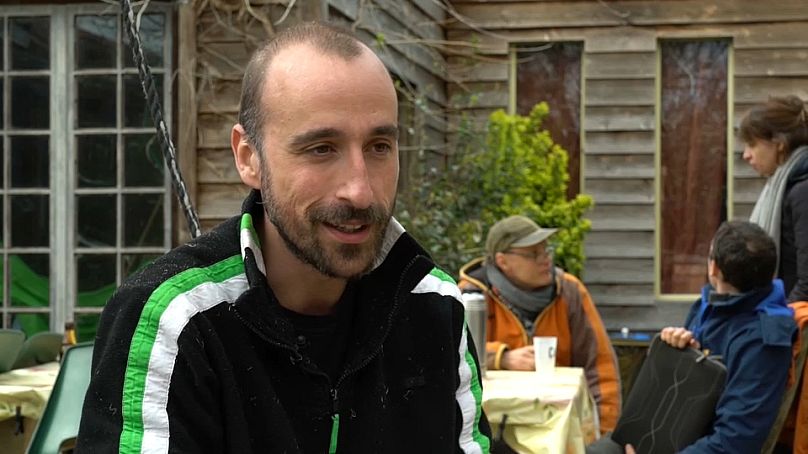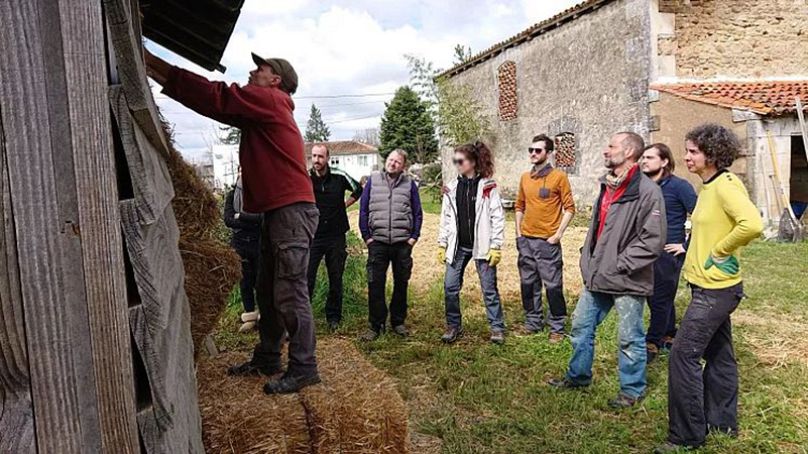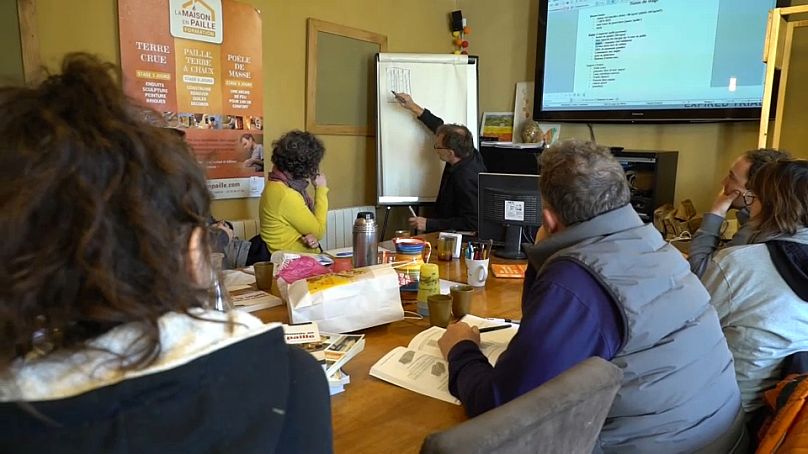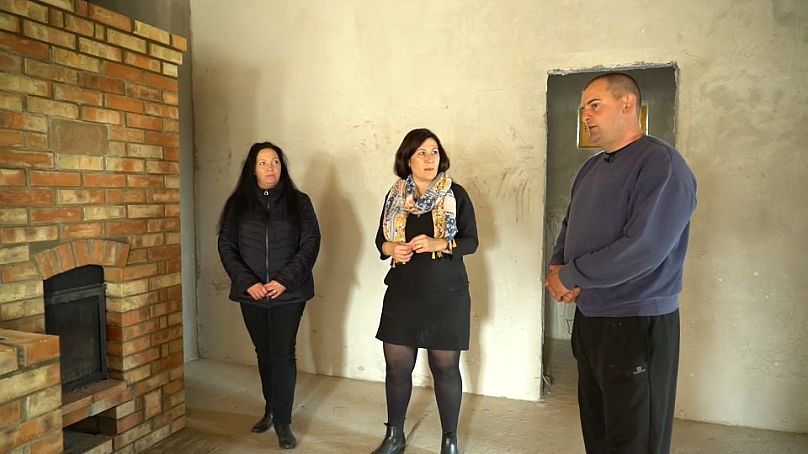In this episode of Euronews Witness, we find out why more and more people in Europe are deciding to build their own green homes from scratch.
Faced with multiple crises and soaring prices, an increasing number of Europeans are exploring alternative housing solutions.
In the past, self-builds were primarily embraced by environmentalists who wanted to reduce the negative impact that traditional homes can have on the natural environment.
But today, the phenomenon has reached the middle classes, with many novices trying their hand at building their own home in a bid to cut costs.
Cutting out the builders to cut costs
Darren Chambon is one of nine trainees learning about straw and timber frame construction in Mosnac-Saint-Simeux, in southwestern France. He was offered a quote for €600,000 by a building firm to construct his perfect home.
"In the beginning, we went to builders. We did what everyone else does, to get a signed contract and have everything taken care of. And then you look at the costs, and you realise, that's no longer a viable option."
"In practical terms, we’ll manage to do what a builder would have done. Maybe not for half the price, but at least for a third less."
Darren thinks he will be able to complete the project for €240,000, by building the house himself with the occasional help of craftsmen.
A growing phenomenon
André de Bouter is a specialist in straw construction who leads the training. Speaking to Witness, he explained that the profile of self-builders has changed since the COVID-19 pandemic.
"In the beginning, when we talked about straw construction, people looked at you as if you were mad! People couldn't understand. If you didn't show some photos, people struggled to believe that straw bales could actually make a serious building," he said.
"Since Covid, more people have decided they want a more autonomous, more resilient, more natural, and more efficient place to live. And they've said to themselves: if I don't do it now, it's possible that in ten years, we won't be able to do it."
Housing crisis woes
André's self-build trainees are all very concerned about the climate crisis. But what's more, they're also taking the leap at a difficult time for the property market.
With interest rates soaring, 45% of mortgage applications were turned down in March, according to figures from French brokers.
Darren, a full-time chef, designed the plans for his future home with his partner, who's a surgeon. Their situation is quite stable and yet they were refused a dozen bank loans, before agreeing to take on this project.
"When we looked at the percentages of richest people in France or globally, we were already in the top bracket," Darren told Witness.
"Who does a bank lend to if it doesn't lend to the people at the top? I was really fed up, I almost gave up at least once or twice," he added.
Inflation has hit Hungary more than any other European country over the past year. In the town of Fegyvernek, István Bajnok, and his wife, Kinga, are adding the finishing touches to their mud house.
To raise their three children, the family depends on Istvan's salary and often relies on their grandparent's farm to keep everyone fed.
István spent the whole of last summer digging up the earth in his garden and making bricks by hand, mixing the earth with water and straw.
"I made a total of 17,500 bricks, with about ten friends", he explained in front of his house, which he has recently insulated with reeds.
Inside the house, the couple has installed a wood-burning furnace that not only keeps them warm but fuels the radiators in the bathrooms, the water heater and even the stove.
"It's a cost-effective method," István said. "We should save about 40% on energy costs."














